A “Bash” scheme in the run game refers to a “back away” scheme. This means the RB is going the opposite direction of the offensive line/blocking scheme (or “away” from the direction of the offensive line/blocking scheme). There are a few different Bash variations, but this article will focus specifically on Zone Bash.
Zone Bash is arguably the most common Bash scheme in college football. This play was used fairly often by Ohio State under Urban Meyer, and it continued to be used frequently under Ryan Day when Justin Fields was still Ohio State’s QB.
Zone Bash is essentially the opposite of a traditional Zone Read play. On a traditional Zone Read play, the O-line is zone blocking towards the direction of the play, the RB is going the same direction as the O-line, and the QB is reading the backside DE/edge player to decide whether to hand the ball off or keep it himself and run to the outside.
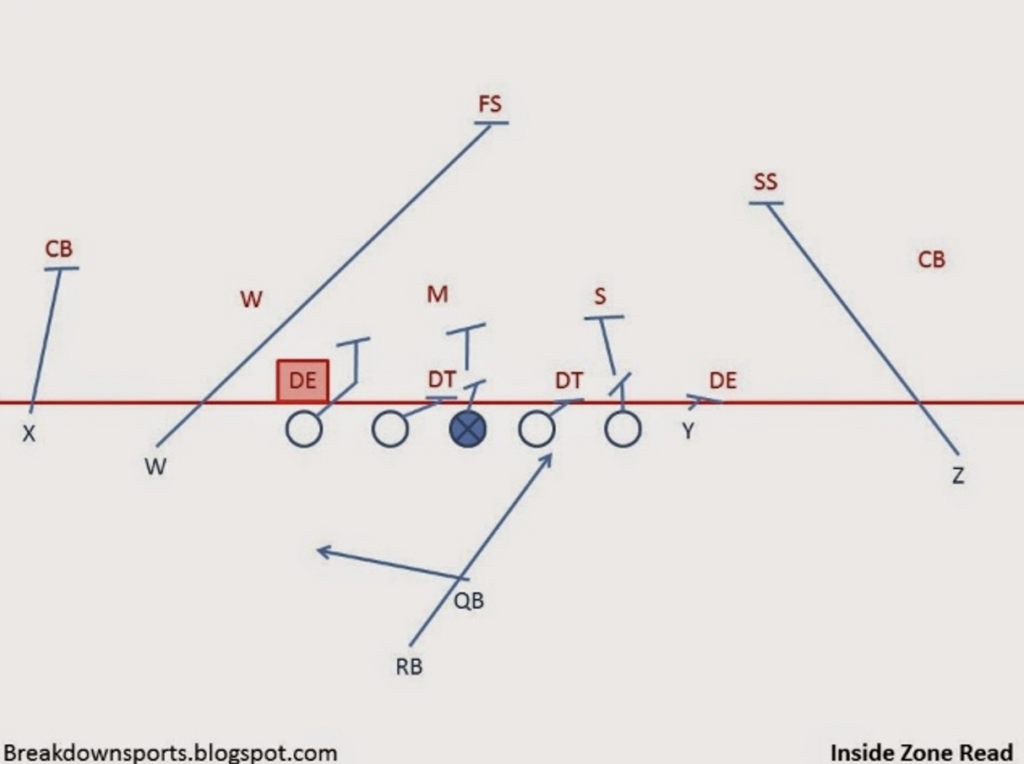
See an example of Ohio State running a traditional Zone Read against Wisconsin in 2019:
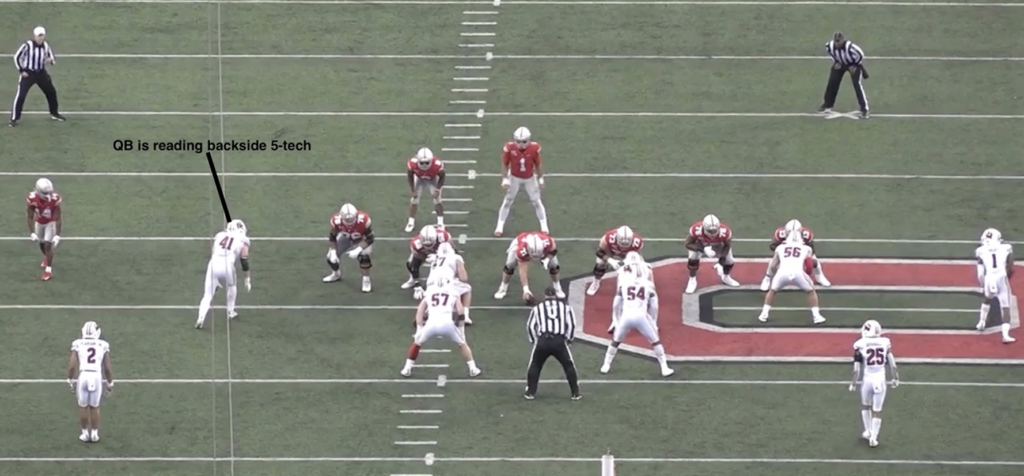
In the above clip, Fields is reading the backside edge defender. Because the backside edge crashed down to tackle J.K. Dobbins, Fields kept the ball himself.
Zone Bash is essentially the opposite, however. The offensive line is zone blocking the opposite direction of the backfield action and the QB is reading the front-side edge defender.

See an example of Zone Bash below:
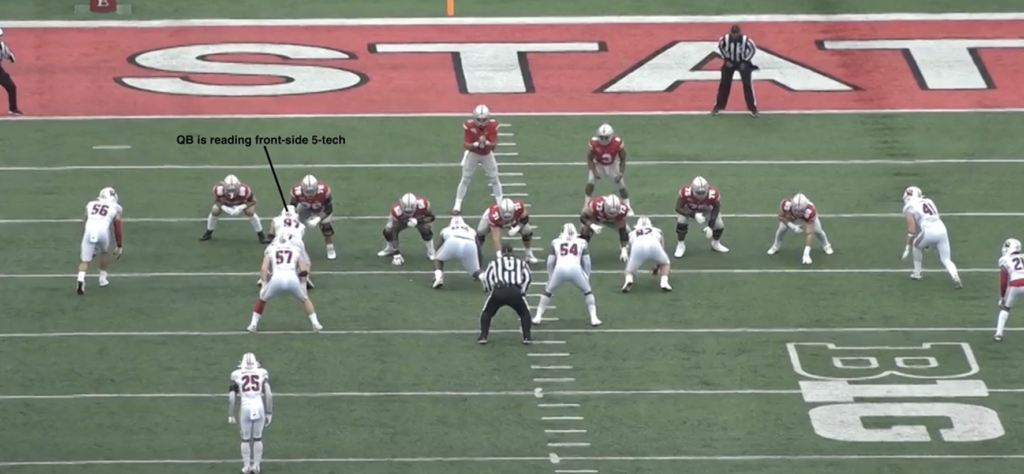
As you can see, Fields is reading the front-side edge defender, so the front-side Tackle and Tight End climb to the next level to become lead blockers in case of a handoff. Because the front-side edge defender crashed down inside, Fields handed the ball off to Dobbins.
However, if the front-side edge defender stays outside for the handoff, the QB will keep the ball and stay on an Inside Zone run path. See an example of this below:
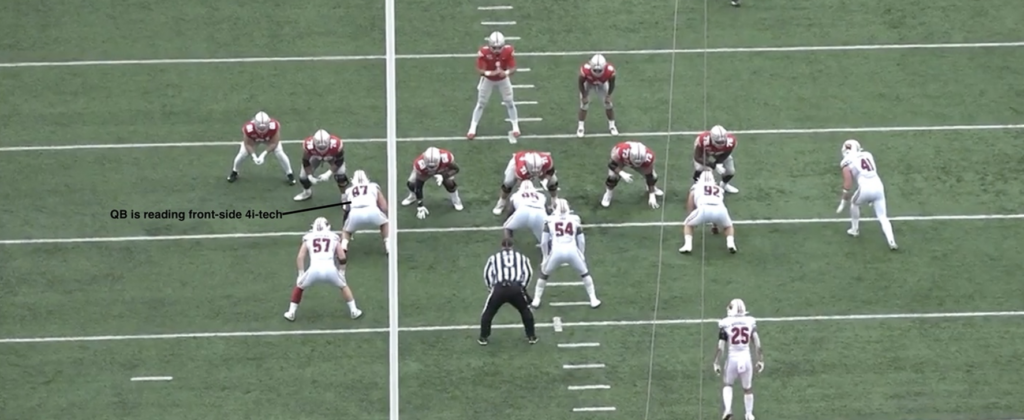
In the above clip (and picture), Wisconsin was in a Tite front defensively, so there was no true “edge” defender. However, against Tite fronts, the QB will just read the front-side 4i-tech instead. Because the front-side 4i-tech stayed outside for the handoff, Fields kept the ball.
While Zone Bash is typically a read option play, Zone Bash blocking principles can also be used on plays that don’t have a read element. To give an example of this, see the next clip in which Georgia is running Same-Side Toss with Zone Bash blocking principles to influence the play-side edge defender. Stetson Bennett was not reading the play-side edge defender – this play was just designed to influence the defense and trust that the RB would beat the play-side edge defender to the outside:
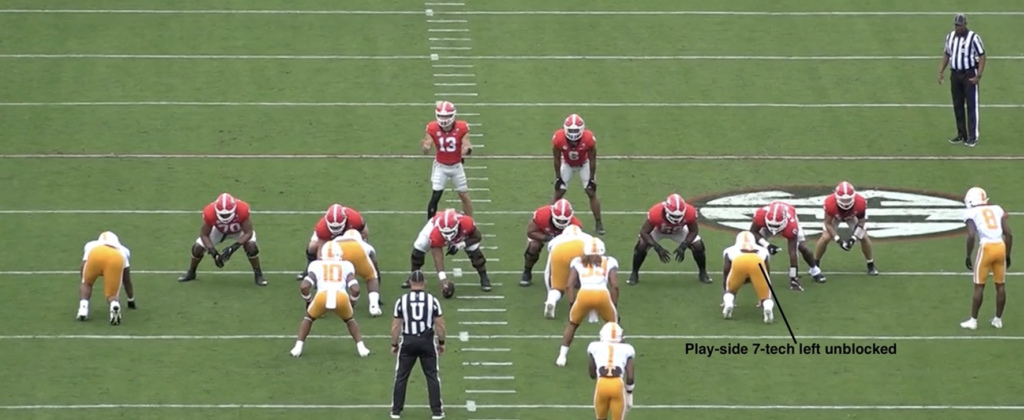

It is also common for teams to run Jet Sweeps with Zone Bash blocking principles, and Georgia always blocks their Jet Sweep plays this way:

CONCLUSION
As you can see, Zone Bash blocking principles can be used in a variety of different ways. Whether or not there’s a read element attached to the play, the main themes are that the RB (or WR, if it’s a Jet Sweep) will always be going the opposite direction of the O-line and the front-side edge defender will always be left unblocked.
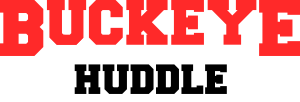

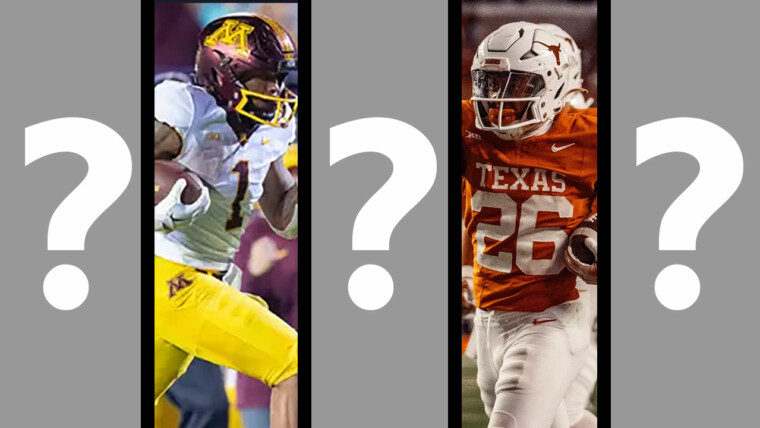

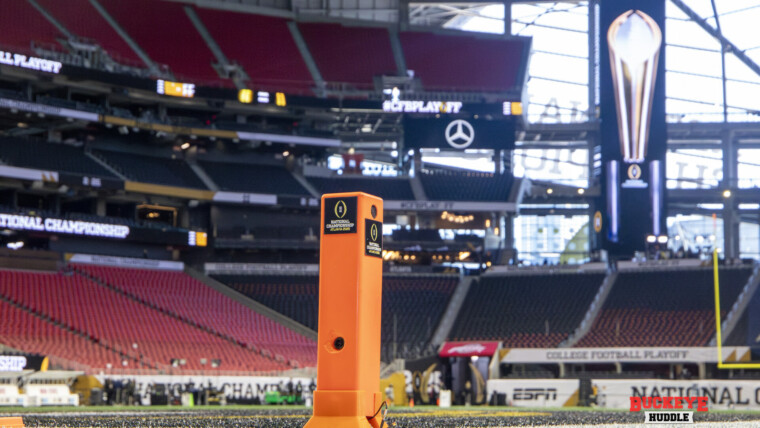
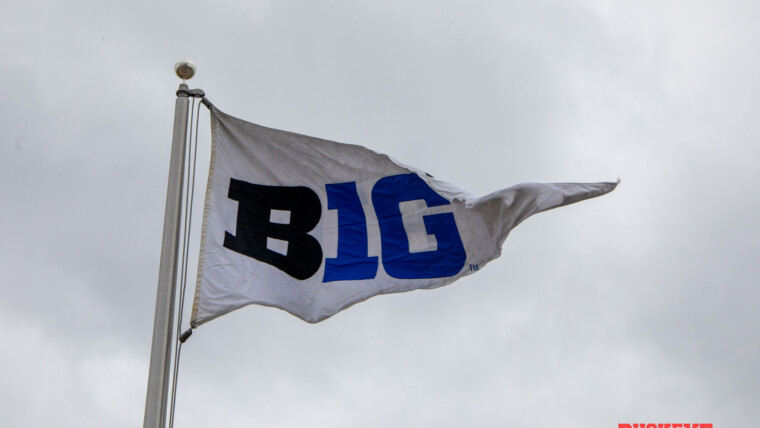
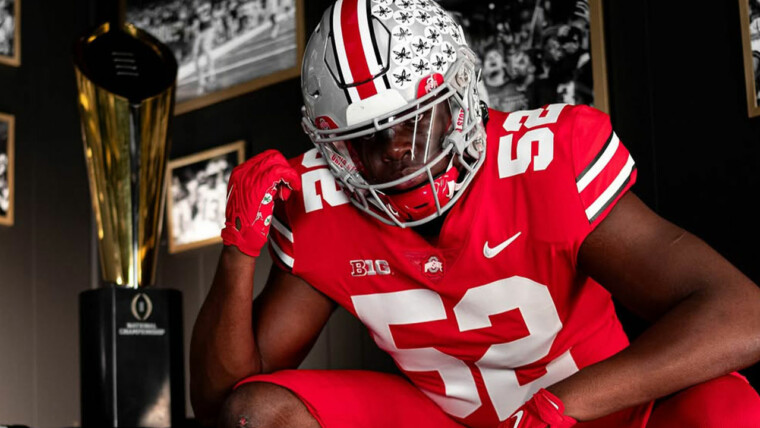
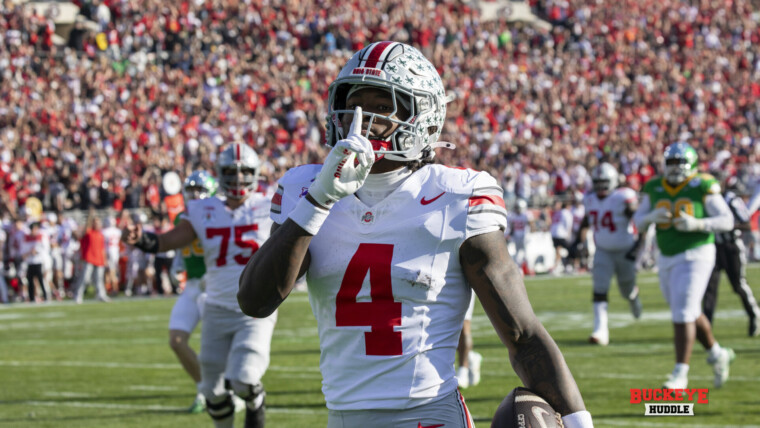
As June wraps up defensive end options dwindle for Ohio State
The Impact: Cameron Brickle gives Ohio State another run-stuffing defensive tackle
The Impact: Damari Simeon is agile, versatile defensive lineman Ohio State needs
Reviewing Ohio State official visitors after chaotic month of June
The Latest on Five-Star Offensive Tackle Felix Ojo
The Impact: Ohio State lands key commitment from cornerback Jordan Thomas
Do the Buckeyes Lead for the Nation’s Top Linebacker?
The Impact: Kayden Dixon-Wyatt is latest prototype receiver to commit to Ohio State